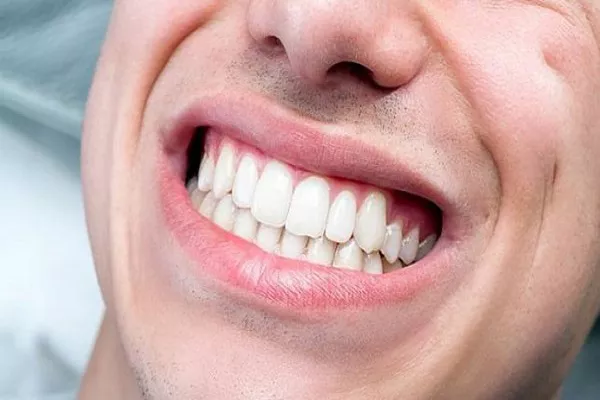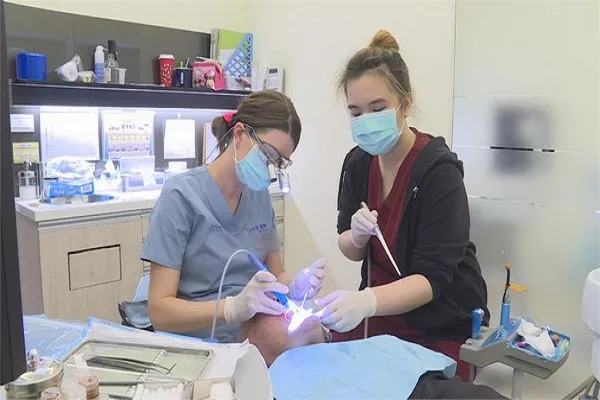In the quest for a brighter, more dazzling smile, teeth whitening products have become increasingly popular. Crest White Strips, a renowned brand offering at-home teeth whitening solutions, has been a go-to choice for countless individuals seeking to achieve a radiant smile. As technology advances, new methods and tools are introduced to enhance the whitening process. One such innovation is the use of blue light in conjunction with teeth whitening strips.
This article will explore the relationship between blue light and Crest White Strips, analyzing the effectiveness, safety, and potential benefits of combining these two teeth whitening techniques. By the end of this comprehensive guide, you’ll have a clearer understanding of whether using blue light with Crest White Strips is a viable option for achieving your desired results.
What are Crest White Strips?
Crest White Strips are over-the-counter teeth whitening products that contain a peroxide-based gel. The gel is applied to flexible strips made of polyethylene, which are designed to conform to the shape of your teeth. The peroxide gel works by breaking down stubborn stains on the enamel, revealing whiter teeth underneath. These strips come in various strengths and are typically used for a specified duration each day over several weeks.
Understanding Blue Light Technology
Blue light technology has gained popularity in the realm of teeth whitening due to its ability to accelerate the whitening process. Blue light, also known as LED teeth whitening, emits a low-intensity, safe spectrum of blue light wavelengths. When exposed to the teeth, the light activates the whitening agents in the gel, helping to expedite the breakdown of stains and discoloration.
The Science Behind Blue Light and Crest White Strips
The combination of blue light and Crest White Strips is believed to enhance the whitening effects of the product. The blue light acts as a catalyst, speeding up the chemical reactions of the peroxide gel. As a result, the gel can penetrate deeper into the enamel, effectively breaking down even the most stubborn stains.
Several studies have evaluated the efficacy of using blue light with teeth whitening products like Crest White Strips. The results have been mixed, with some studies suggesting a noticeable improvement in whitening results when using blue light, while others found minimal or no significant difference. The effectiveness may vary depending on factors such as the initial level of discoloration, the concentration of the whitening gel, and the duration of treatment.
Pros and Cons of Using Blue Light with Crest White Strips
a. Pros:
i. Faster Results: The accelerated whitening process can lead to quicker results, making it appealing for those with time-sensitive whitening goals.
ii. Enhanced Whitening: For individuals with stubborn or severe discoloration, the combination of blue light and Crest White Strips may offer better results compared to using the strips alone.
iii. Convenience: Blue light devices are often portable and easy to use, making them a convenient addition to your teeth whitening routine.
b. Cons:
i. Potential Sensitivity: Blue light technology may increase tooth sensitivity for some users, especially when used in conjunction with peroxide-based whitening agents.
ii. Limited Scientific Evidence: Despite some positive anecdotal evidence, the scientific research supporting the significant benefits of blue light with Crest White Strips is not yet entirely conclusive.
iii. Cost: Incorporating blue light technology into your teeth whitening regimen may come at an additional cost, as you’ll need to purchase a compatible light device.
Safety Precautions and Considerations
While the use of Crest White Strips is generally considered safe, adding blue light to the equation requires extra caution. Before embarking on this combined whitening journey, it’s crucial to consult with your dentist or oral healthcare professional. They can assess your oral health, advise you on the best teeth whitening approach, and recommend suitable blue light devices.
Furthermore, it’s essential to follow the instructions provided with both the Crest White Strips and the blue light device carefully. Overuse or improper application of either component can lead to adverse effects such as gum irritation, tooth sensitivity, or uneven whitening.
Alternatives to Conside
If the combination of blue light and Crest White Strips doesn’t appeal to you or isn’t suitable for your teeth, various alternatives are worth exploring:
a. Whitening Toothpaste: Opt for toothpaste with mild abrasives or peroxide for gradual, gentle whitening.
b. Custom Whitening Trays: Consider getting custom-made whitening trays from your dentist, offering a more tailored approach to teeth whitening.
c. In-Office Whitening: Professional dental clinics offer in-office whitening treatments that provide faster and more noticeable results.
Conclusion
The combination of blue light technology and Crest White Strips has garnered interest as a potential means to achieve a brighter smile. While some users have reported positive results, the scientific evidence supporting the significant benefits of this pairing remains inconclusive. As with any teeth whitening procedure, it’s essential to prioritize safety and consult with a dental professional before proceeding.
Ultimately, the decision to use blue light with Crest White Strips lies with the individual, considering their dental health, preferences, and desired outcomes. Proper use and adherence to instructions can help minimize potential risks while maximizing the whitening effects.
Remember that a healthy and radiant smile starts with consistent oral care practices and regular dental check-ups. With the right approach and realistic expectations, you can achieve a brighter smile and boost your confidence in no time.
https://www.padmel.com/archives/27413
https://www.padmel.com/archives/27411
https://www.padmel.com/archives/24001
































